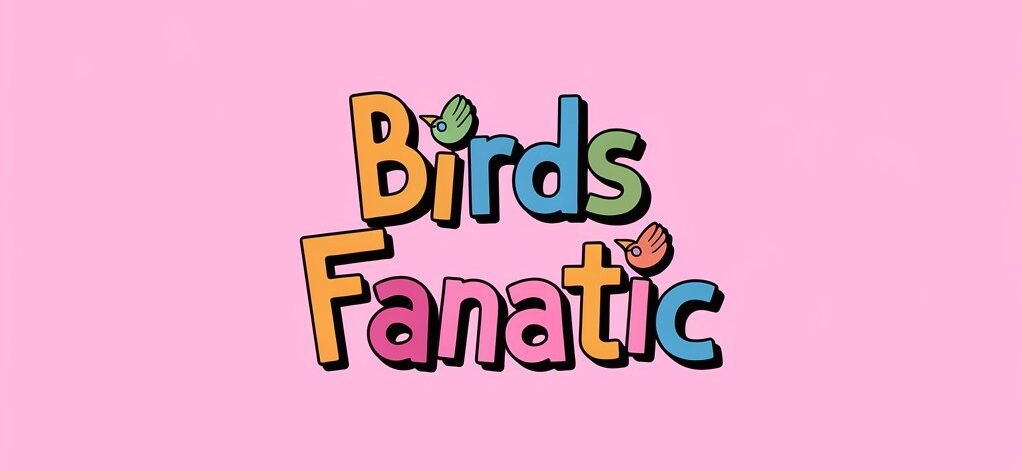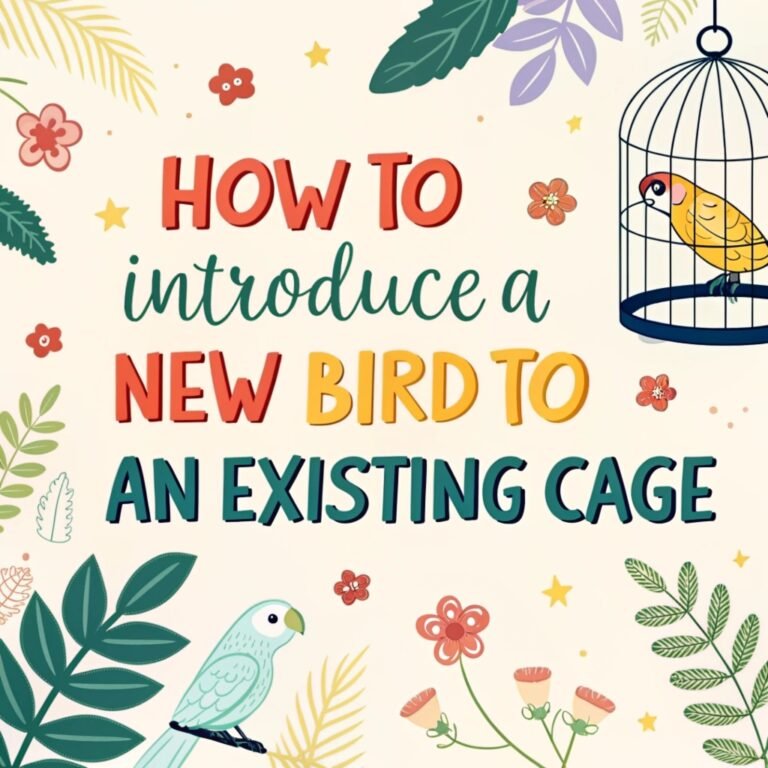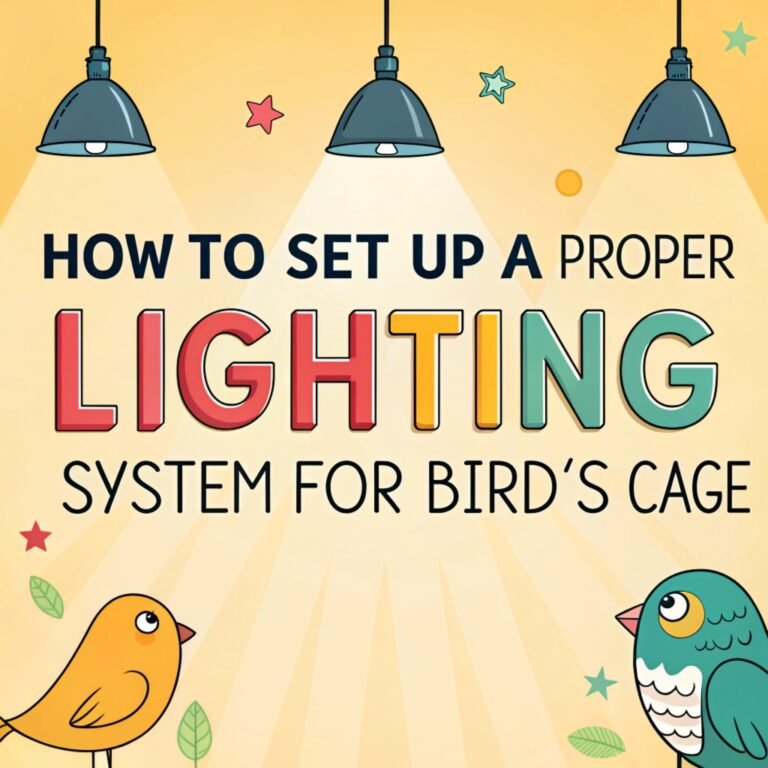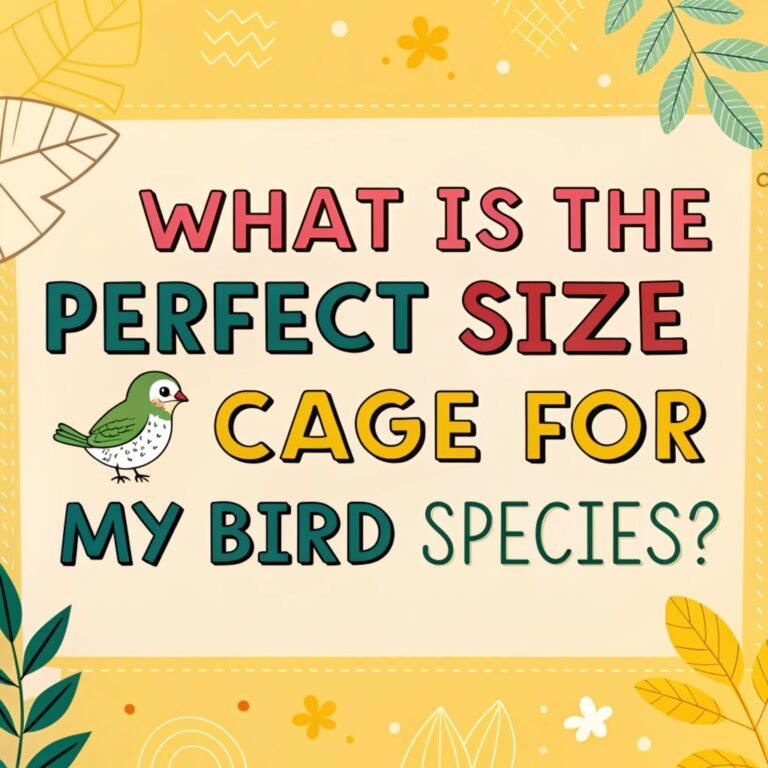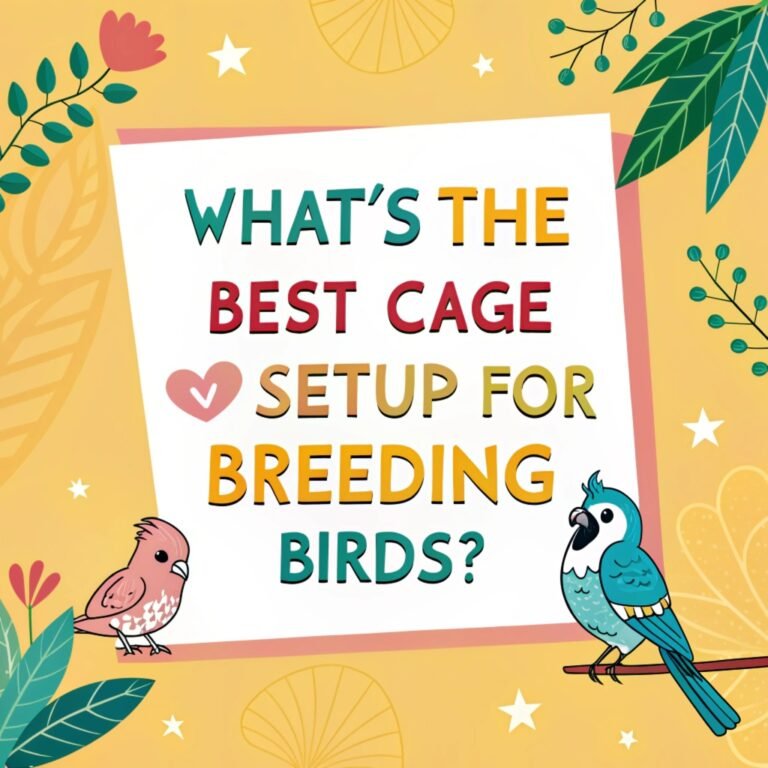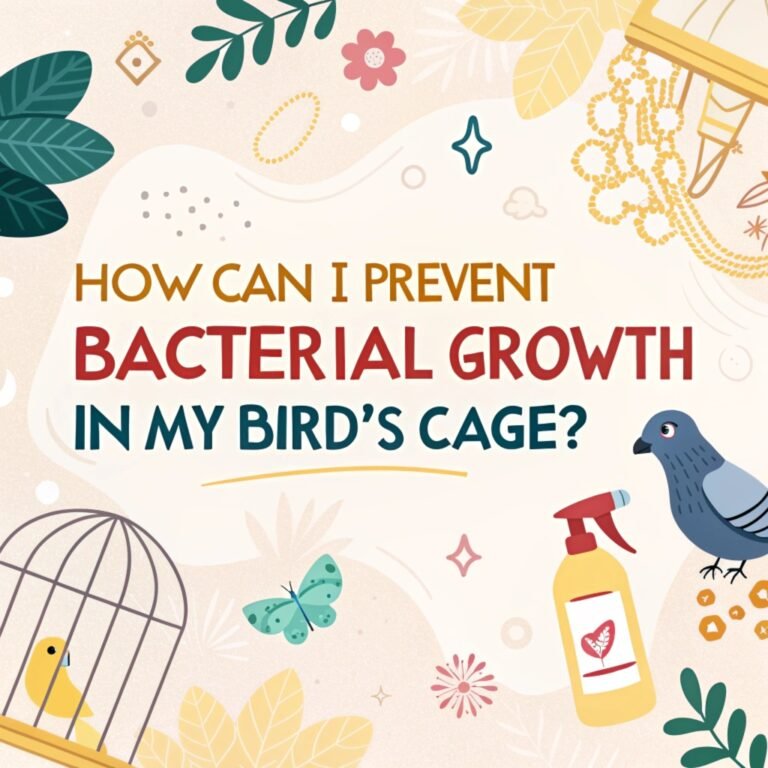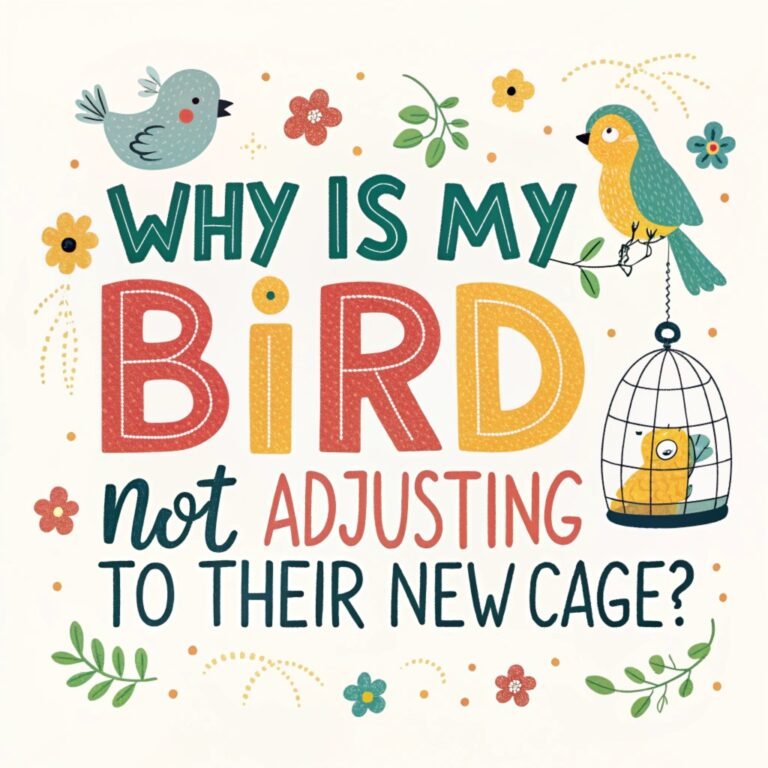Why Is My Bird Chewing The Cage Bars? – A Comprehensive Guide
Many bird owners have experienced the frustration and concern of seeing their feathered friends chewing on cage bars.
This behavior, while common, can be puzzling and even worrying for pet owners.
Whether you have a cockatiel, parrotlet, or any other species of pet bird, bar chewing is a behavior that requires attention and understanding.

Key Takeaways
- Bar chewing is a common behavior in pet birds that can stem from various causes, including boredom, stress, and natural instincts.
- This behavior may lead to concerns such as cage damage, beak wear, and potential health risks from ingesting paint or metal.
- Enrichment is crucial in preventing and reducing bar chewing, including providing a variety of toys, perches, and activities.
- Behavioral training and positive reinforcement can help redirect a bird’s attention from cage bars to more appropriate chewing items.
- Environmental factors such as cage size, placement, and out-of-cage time play significant roles in a bird’s overall well-being and behavior.
- Regular veterinary check-ups are essential to rule out any underlying health issues that might contribute to excessive chewing.
- Patience and consistency are key when addressing behavioral issues in pet birds, as changes may take time to implement and show results.
- Understanding your bird’s natural behaviors and species-specific needs is fundamental to providing proper care and preventing problematic behaviors.
- Social interaction and mental stimulation are vital for the psychological health of pet birds and can significantly reduce unwanted behaviors.
- Cage design and material selection are important considerations for bird owners to ensure safety and minimize the appeal of bar chewing.
Natural Instincts and Beak Maintenance
Birds in the wild use their beaks for a variety of purposes, including foraging, nest-building, and grooming.
In captivity, these natural instincts remain strong, and chewing on cage bars may be a way for your bird to maintain its beak.
The beak continuously grows, and in nature, birds would wear it down through various activities. When confined to a cage, your feathered friend might turn to the bars as a substitute.
This behavior, while seemingly problematic, is often just your bird’s attempt to keep its beak in good condition.
However, it’s essential to provide safer alternatives for beak maintenance to prevent potential harm from excessive bar chewing.
Boredom and Lack of Stimulation

One of the most common reasons for cage bar chewing is simply boredom. Birds are intelligent creatures that require mental stimulation and physical activity.
When confined to a cage without enough engaging toys or activities, they may resort to chewing on the bars as a form of entertainment.
This behavior can become a habit if not addressed promptly. To combat boredom-induced chewing, it’s crucial to provide a variety of toys that encourage foraging, problem-solving, and physical manipulation.
Rotate these toys regularly to maintain your bird’s interest and prevent monotony in their environment.
Stress and Anxiety
Stress and anxiety can manifest in various ways in birds, and cage bar chewing is one of them.
Changes in the bird’s environment, such as a new home, new cage mates, or alterations in their routine, can trigger stress-related behaviors.
Additionally, if a bird feels insecure or threatened in its surroundings, it may chew on the bars as a coping mechanism. Identifying and addressing the source of stress is crucial.
This might involve creating a more secure environment, providing more hiding spots, or adjusting the cage placement to a quieter area of your home. Consistency in daily routines can also help alleviate anxiety in pet birds.
Attention-Seeking Behavior

Sometimes, birds chew on cage bars simply to get their owner’s attention. If you’ve inadvertently reinforced this behavior by responding to it in the past, your bird may have learned that chewing leads to interaction with you.
Even negative attention, such as scolding, can reinforce the behavior if the bird craves any form of interaction.
To address this, it’s important to reward positive behaviors and ignore the bar chewing when it occurs.
Increase positive interactions with your bird during times when it’s not engaging in problematic behaviors to reinforce desirable conduct.
Nutritional Deficiencies
In some cases, excessive chewing on cage bars might be a sign of nutritional deficiencies. Birds require a balanced diet rich in various nutrients, and if they’re not getting what they need, they may engage in unusual behaviors like bar chewing.
This could be an attempt to obtain minerals or other nutrients they’re lacking. Ensure your bird is receiving a well-balanced diet appropriate for its species.
Consult with an avian veterinarian to review your bird’s diet and make any necessary adjustments.
Providing mineral blocks or cuttlebones can also help satisfy your bird’s nutritional needs and redirect chewing behaviors.
Hormonal Changes and Breeding Behavior
Hormonal fluctuations, particularly during breeding seasons, can lead to increased chewing behaviors in birds.
This is often associated with nest-building instincts, even if there’s no actual intention to breed.
During these periods, birds may become more territorial and exhibit heightened chewing behaviors as they attempt to modify their environment.
Understanding your bird’s breeding cycles and recognizing signs of hormonal behavior can help you manage these temporary changes.
Adjusting light exposure and avoiding overly stimulating foods can help mitigate hormonal surges and associated behaviors.
Cage Size and Layout Considerations
The size and layout of your bird’s cage can significantly impact its behavior. A cage that’s too small or lacks proper perches and play areas can lead to frustration and excessive bar chewing.
Ensure your bird’s cage is appropriately sized for its species and provides ample space for movement and play.
The arrangement of perches, toys, and feeding stations should encourage natural behaviors and provide mental stimulation.
A well-designed cage layout can significantly reduce the likelihood of problematic chewing by keeping your bird engaged and comfortable in its environment.
Environmental Enrichment Strategies
Environmental enrichment is key to preventing and reducing cage bar chewing. This involves creating a dynamic and stimulating environment that caters to your bird’s natural instincts and behaviors.
Incorporate a variety of textures, colors, and materials in your bird’s toys and perches. Puzzle toys that dispense treats can provide mental stimulation and encourage problem-solving skills.
Natural branches of varying diameters can offer more interesting perching options and opportunities for healthy chewing.
Regularly introducing new elements to the cage keeps the environment fresh and engaging for your feathered friend.
Training and Positive Reinforcement Techniques
Behavioral training using positive reinforcement can be highly effective in addressing cage bar chewing.
Start by identifying triggers for the behavior and work on redirecting your bird’s attention to more appropriate activities.
Use treats and praise to reward your bird when it engages with toys or performs desirable behaviors.
Clicker training can be particularly useful in reinforcing positive actions. Consistency is key in training, so ensure all family members are on board with the training approach.
Remember, patience is crucial as behavioral changes take time and persistence.
Health Concerns and Veterinary Care
While often behavioral, excessive cage bar chewing can sometimes indicate underlying health issues.
Dental problems, beak overgrowth, or gastrointestinal discomfort might lead a bird to chew on bars more frequently.
Regular check-ups with an avian veterinarian are essential to rule out any medical causes for the behavior.
Additionally, a vet can assess whether the chewing has caused any damage to your bird’s beak or oral health.
If health concerns are identified, addressing them promptly can often resolve the chewing behavior along with improving your bird’s overall well-being.
Cage Material and Safety Considerations
The material of your bird’s cage plays a crucial role in both safety and the likelihood of chewing behaviors.
Cages with toxic paints or coatings can pose serious health risks if ingested through chewing.
Opt for cages made with bird-safe materials and finishes. Stainless steel is often recommended for its durability and non-toxic nature. If your current cage shows signs of wear or chipping, consider replacing it to ensure your bird’s safety.
Some bird owners find success with acrylic or clear plastic panels attached to the inside of the cage, which can deter chewing while maintaining visibility.
Social Interaction and Mental Stimulation
Birds are highly social creatures that thrive on interaction. Lack of adequate social time with their human family or other birds can lead to boredom and problematic behaviors like cage bar chewing.
Ensure you’re spending quality time with your bird daily, engaging in activities like talking, training, or simply being in the same room while you go about your tasks.
For some species, having a companion bird can provide additional social stimulation.
However, introducing a new bird should be done carefully and with consideration of your current bird’s personality and needs.
Out-of-Cage Time and Exercise
Providing ample out-of-cage time is crucial for your bird’s physical and mental health.
Regular exercise and the freedom to explore can significantly reduce stress and boredom-related behaviors like cage bar chewing.
Create a safe space in your home where your bird can fly, climb, and play outside its cage.
Supervise these sessions to ensure safety and use them as opportunities for bonding and training.
The more positive experiences your bird has outside its cage, the less likely it is to engage in problematic behaviors when inside.
DIY Enrichment Ideas and Homemade Toys
Creating homemade toys and enrichment items can be a cost-effective and rewarding way to keep your bird entertained.
Simple items like paper towel rolls, untreated wood pieces, or strung-together bottle caps can make engaging toys.
Foraging toys filled with treats encourage natural behaviors and provide mental stimulation.
Always ensure that any DIY items are safe and free from harmful materials or small parts that could be ingested.
Rotating these homemade toys with store-bought ones keeps your bird’s environment fresh and interesting, reducing the appeal of cage bar chewing.
Conclusion
Understanding and addressing cage bar chewing in pet birds requires a multifaceted approach.
By considering natural instincts, providing adequate enrichment, addressing potential health issues, and ensuring proper care and attention, bird owners can significantly reduce this behavior.
Remember that each bird is unique, and what works for one may not work for another. Patience, consistency, and a willingness to adapt your approach are key to success.
With time and effort, you can create an environment that satisfies your bird’s needs and minimizes problematic behaviors, leading to a happier, healthier relationship between you and your feathered companion.
FAQs
Is cage bar chewing harmful to my bird?
While occasional chewing is normal, excessive bar chewing can potentially damage your bird’s beak or lead to ingestion of harmful substances if the cage coating is worn off. It’s important to monitor the behavior and address it to prevent any health issues.
How can I tell if my bird is chewing out of boredom or for another reason?
Observe when the chewing occurs. If it’s more frequent during times when you’re away or when the bird has less stimulation, boredom is likely a factor. However, if it persists despite enrichment efforts, consult a veterinarian to rule out health issues.
Are there any safe alternatives I can offer my bird to chew on instead of cage bars?
Yes, many safe alternatives exist. Natural wood perches, untreated pine cones, safe wooden blocks, and specially designed bird chew toys are excellent options. Always ensure any item you provide is bird-safe and free from harmful chemicals or small parts.
How long does it typically take to change a bird’s chewing behavior?
Changing established behaviors can take time and patience. With consistent application of enrichment strategies and positive reinforcement, you may see improvements within a few weeks to a few months. However, every bird is different, and some may take longer to adjust.
Can changing my bird’s diet help reduce cage bar chewing?
In some cases, yes. Ensuring your bird has a balanced, species-appropriate diet can reduce the likelihood of nutritional deficiencies that might lead to excessive chewing. Consult with an avian veterinarian for specific dietary recommendations for your bird species.

Hello, I’m Amelia White, the founder of birdsfanatic.com. As a lifelong bird enthusiast and spiritual seeker, I’ve always been fascinated by the mystical connections between birds and the human experience. On this site, I share my knowledge and insights into the symbolic meanings and spiritual significance of various bird species, exploring their roles in mythology, folklore, and cultural traditions. Join me on this journey into the world of birds, where we’ll discover the hidden wisdom and guidance that these magnificent creatures have to offer.
